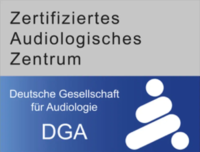About the disease
Chronic sinus and maxillary sinus inflammation is a condition which develops as a result of viral or bacterial infection. It can also develop as an allergic reaction. Maxillary sinus is the biggest paranasal sinus and it is located in the middle section of face, under the eyes and in the cheekbone area.
Most commonly, chronic sinus and maxillary sinus inflammation is a secondary condition, which develops as a result of recurrent sinusitis. If not treated on time, chronic sinus and maxillary sinus inflammation can lead to development of polyps, which are harder to treat and require surgical treatment. Untreated sinus inflammation can also lead to development of cysts, which are growths in the nasal cavity.
Overall, chronic sinus and maxillary sinus inflammation is a more serious condition than acute form of this disease, as it develops if the acute phase had not been treated on time.
A person may feel pain in the cheekbones and in the teeth, which can make eating and chewing difficult and painful. In most cases, only one side of maxillary sinus is affected. Sometimes two become affected if the condition had not been treated early. There is a danger that all sinuses can become infected, so antibacterial treatment is vital in this case.
Causes of chronic sinus and maxillary sinus inflammation include previous infection, frequent laryngological diseases and also genetic predisposition. There is no age or gender predisposition to this condition. It can develop at any age. If treatment is started early, the infection can be fought in the matter of days.
Symptoms
- Pain in the cheekbones area
- Pain near the upper teeth
- Headache
- Dizziness
- Pressure in the area below the eyes
- Redness in the eyes in severe cases
- Fever
- Painful chewing
Diagnosis
- During a general examination, the doctor will examine the sinuses of a person and will also ask about previous infections of nasal cavity.
- The doctor will also determine if there is pressure under the eyes and if chewing is painful.
- Imaging tests, such as an X-ray and MRI, are used to examine the maxillary sinus and other sinuses to determine the extent of infection and also show its exact location. It can also determine if the patient has polyps or cysts.
Treatment
- Conservative treatment uses antibiotics to fight the infection which initially started the inflammation. A patient may also be prescribed anti-mucus formation drugs which can prevent mucus from abnormal formation.
- Fenestration is a surgery used to cut open the maxillary sinus and clean it in case there had been pus formation due to maxillary sinus inflammation.
Authors: Dr. Vadim Zhiliuk, Dr. Sergey Pashchenko




















